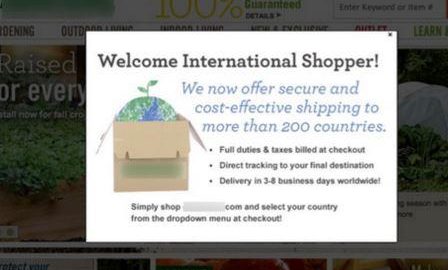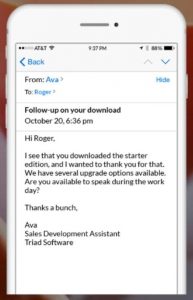
It’s a decision that marketers often wrestle with — whether to present messages that are highly relevant to a small portion of your website visitors, at the risk of alienating, annoying or turning off the rest of your visitors. Let me give an example.
Let’s say that you have a travel site. You have a number of different offers that appeal to visitors from one region of the US but not to others. One of your offers includes flights departing from New York. Someone from Los Angeles is not going to care about this particular offer — it’s just not relevant to him. Do you promote it on your homepage? If you don’t, you risk people from NY not seeing it. If you do, you risk not being relevant to any visitors outside NY.
Targeting different messages, content or product recommendations to visitors based on their geo-location eliminates the need for this tough call by ensuring that your visitors don’t have to wade through information that doesn’t apply to their location.
It’s a tactic that many marketers are having success with. Montrose Travel gained a 19% lift in bookings by promoting location-specific offers on its site, while a consumer financial services company saw a 200% lift in clickthroughs by targeting its offers to five specific regions in the US.
But targeting people based on their location has the potential to be a little off-putting to your visitors. You need to make sure you are approaching it the right way. Here are some do’s and don’ts of geo-targeting to help you get started.
1. DO target visitors with messages that are only relevant within certain area
If you have a message to share that is only relevant to those within a definable area, you have a perfect situation for geo-targeted website personalization. With this approach, you can invite visitors to your event that’s taking place near them, or share shipping information for visitors from different countries.
For example, if you offer free shipping within the US but not to international visitors, you can remove all mention of free shipping for international visitors to eliminate confusion. Or you could make sure that the options for international shipping are very prominent while the visitor is browsing.
2. DO personalize your product or content recommendations based on visitor’s location
Geo-targeting provides a useful way to give recommendations to your visitors for both product and content.
For example, a retailer can suggest sweaters or long sleeve shirts to people on the east coast and short sleeve shirts to those on the west coast during the fall season. An insurance provider could suggest articles about hurricane preparation to visitors located in the southeastern US during the late summer.
3. DO use location to serve up different languages within messages
One of the first steps to being relevant to each visitor is to literally speak their language. If your site attracts visitors from across the globe, you can serve up a version of your site, or just specific messages, in each country’s language to make sure that you’re understood.
4. DON’T be creepy about it
The do’s above are subtle ways to use location-based targeting. In some instances the visitor may not even realize he or she is getting a different experience from other visitors. But you need to be careful to avoid serving a message that doesn’t provide visitors with any value and instead just tells that them you know where they are.
As consumers, I think we would all agree that a message that says “Hi, visitor from Somerville, MA” is a little unnerving and doesn’t help me accomplish anything specific on your site.
5. DON’T just use geolocation because you can
Sometimes as marketers we get caught up in the next big thing. It’s important to think it through before each geolocation campaign.
Ask yourself: is using geolocation relevant here? Are there big differences in preferences or intent in visitors from different locations? If not, there are probably more relevant ways to personalize your website — such as by what visitors are browsing for on your site.
Wrap up
Geo-targeting is just one way among many to personalize your website to individual visitors to help increase conversions and engagement.
But as with all personalization tactics, it’s important to test it first. If you think you may be too adventurous with geo-targeting, target a small number of users first to see if it negatively impacts your results then scale up from there.
Testing campaigns to learn what works and doesn’t work with your visitors is an important part of knowing how far you can go with geo-targeting and how to use it to generate the most lift (and without creepiness).
Digital & Social Articles on Business 2 Community
(125)







